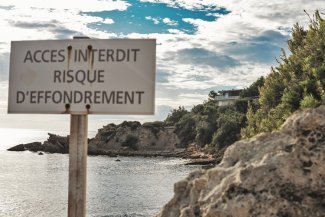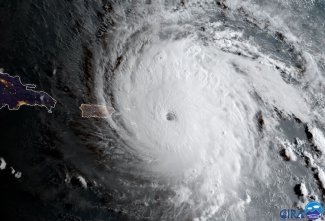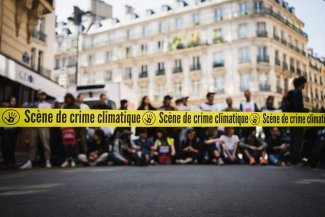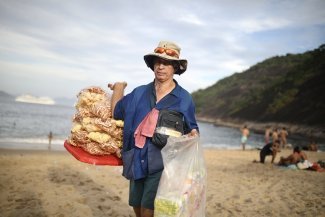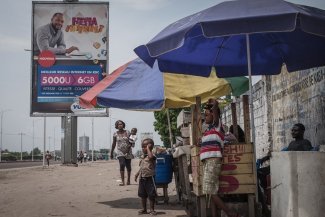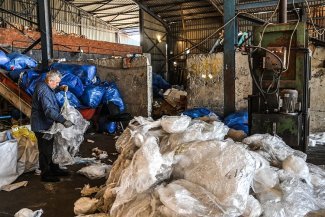The small island paradise of Pulau Pari is located an hour north-west of Jakarta. Its population of 1,500 inhabitants subsist mainly from fishing and tourism. In recent years, the island has increasingly been affected by rising sea waters, which have claimed 11 per cent of its surface area in the last decade and threaten to submerge it entirely. Last year alone, the island flooded five times.
With the support of several NGOs, a group of Pulau Pari’s residents have decided to take legal action against the Swiss company Holcim, the world’s leading cement manufacturer and one of its top 50 greenhouse gas emitters. In a press release issued in February 2023, the plaintiffs call for “compensation for climate damages they have suffered, a financial contribution to flood-protection measures, as well as the rapid reduction of Holcim’s CO2 emissions”.
According to the organisers of the Call for Climate Justice campaign, “this marks the first time that a Swiss corporation could be held legally accountable for its role in climate change”. The campaign’s organisers believe that Holcim, based in the Swiss city of Zug, is doing “too little to reduce its emissions so as not to exceed the threshold of 1.5°C of global warming”.
Holcim was active in Indonesia until 2019, when it sold its business to local cement manufacturer Semen Indonesia. According to one study, however, the company has emitted more than 7 billion tonnes of CO2 since 1950, accounting for 0.42 per cent of all global fossil fuel emissions and more than twice as much as Switzerland has emitted since the start of the industrial revolution.

This aerial photograph taken on 22 February 2023 shows a concrete embankment, used to contain rising sea levels, around part of Pari Island in the Thousand Islands archipelago (Kepulauan Seribu in Indonesian).
Ecologists estimate that most of the 42-hectare island could be under water by 2050.
Threatened by rising sea levels, 58 Small Island Developing States (SIDS) located around the globe are suffering some of the worst impacts of climate change, even though they are least responsible for it: together they account for just 1 per cent of global greenhouse gas emissions.

An island resident sits in front of her house in February 2023. The low wall protecting her from rising waters reads: “Is there any justice left for residents of Pulau Pari?”
For years, the inhabitants of these disappearing atolls have been fighting to save their land. At COP27, held last December in Egypt, the small island countries called for a tax on the profits of fossil fuel multinationals, which would be used to help poor nations adapt to and mitigate the effects of climate change.

Local residents have planted mangrove trees to restore part of the mangrove forest and protect the coast from erosion.
The plaintiffs are demanding €14,000 in compensation for the damage caused. While a paltry sum, this money could be used to finance the preservation and expansion of the mangrove forest. This is the second international case of this kind brought by residents of the Global South against a major Western company.

Off the coast of Pari, Sartono and his wife Asmania check their seaweed crops, which supported the couple and their three children before becoming contaminated.
Asmania runs a small shop and guest house on the island. With her husband, she bought part of a fish farm off the coast. Floods contaminated the farm with grey water and kept tourists away for months. Climate change is affecting her future and her family’s future.
Asmania knows that if they want to continue living on their island, they have to adapt. But the islanders don’t have the resources to do so. “We urgently need a water filtration system for those times when the sea floods our wells with salt water,” explains Asmania.

In this photo taken on 22 February 2023, a man fishes in the waters of the archipelago. In the distance, buildings in the northern part of the city of Jakarta can be seen.
Fishing is one of the primary economic activities of the region’s inhabitants. They are already seeing a decline in fish stocks that is threatening this activity. “For a few days after the floods, I couldn’t go out fishing. I also had to repair my boat. The water had washed it ashore and smashed it against a tree,” says Bobby, a fisherman involved in the complaint against Holcim.

Edi Mulyono takes care of his hire bikes next to a sign that reads: “Is there still a friendly smile for people?”
Edi, who lives on the island with his wife and their three young children, owns two guest houses and offers activities to tourists from Jakarta. After the floods, his income suffered when many of his customers cancelled. “We have to do more than just building concrete dykes. It’s not good for the environment. We should be planting more mangroves,” he says.

Edi (left) and Asmania pose on 11 June 2023 next to Swiss cement giant Holcim’s plant in Eclepens, western Switzerland.
In June 2023, Edi and Asmania were chosen by other villagers to travel to Switzerland to discuss their island’s plight. They have received support in their legal battle from three NGOs: Entraide Protestante Suisse (HEKS/EPER), the European Centre for Constitutional and Human Rights (ECCHR) and the Indonesian Forum for Living Environment (WALHI).




